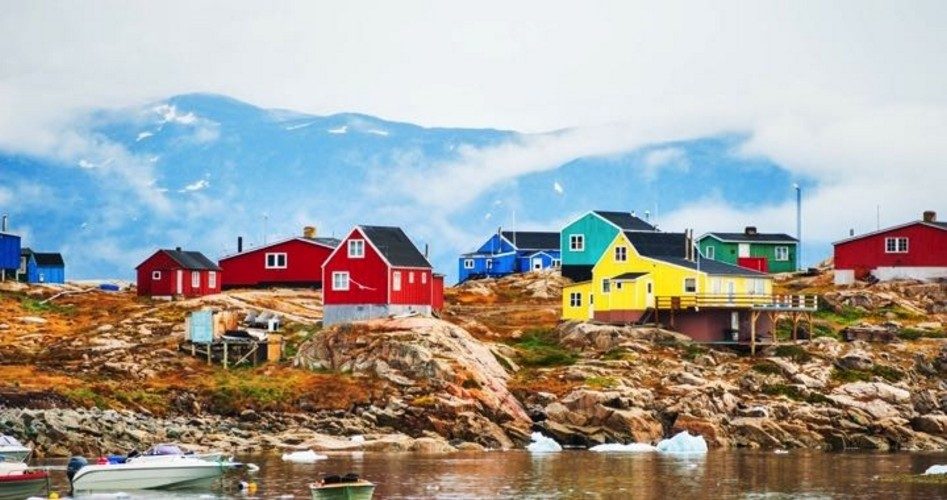
Before moving into the White House, President Donald Trump was among the better-known real estate developers in the country, and his book Art of the Deal was a best-seller. Now, it was revealed this week that Trump has considered the idea of buying Greenland.
The United States has actually previously offered to purchase Greenland — from Denmark, which has owned the island (the world’s largest) since 1814. After World War II, President Harry Truman floated a plan to buy Greenland from Denmark for $100 million, but Denmark refused to sell. Before that, in the same year that the United States bought Alaska from Russia, 1867, the United States offered to buy both Greenland and Iceland.
While Greenland is home to vast natural resources within its 811,000 square miles, it is heavily subsidized by Denmark, with over half of its annual budget being paid for by the Danes. It is doubtful that Trump could interest Congress in taking on more spending responsibilities right now, considering the financial drag of such U.S. possessions like Puerto Rico. And when word leaked out of Trump’s possible interest, Greenland’s Ministry of Foreign Affairs said Friday morning, “We’re open for business, not for sale.”
But the United States has long viewed Greenland as important to American security. After the fall of Denmark to National Socialist Germany in 1940, there was some concern that the Germans might use Greenland as a base for military operations against the United States and Canada. Because of that, the United States occupied Greenland in April 1941 to make sure that it stayed out of Hitler’s hands. Then, during the Cold War, the United States and Denmark entered into a treaty giving America rights to Thule Air Base in northern Greenland. The base included a radar station, an important part of the Distant-Early Warning (DEW) system that was constructed to alert the United States of any possible attack by either Soviet planes or missiles over the Arctic. The base is 750 miles north of the Arctic Circle.
In recent years, the Chinese Communists have attempted to establish an economic interest on the island. Just last year, the U.S. Department of Defense was able to thwart a Chinese attempt to finance three airports in Greenland.
Some have compared the American purchase of Alaska in the 19th century to the renewed interest in buying Greenland. In 1867, Secretary of State William Seward negotiated a treaty with Russia to buy Alaska, costing the U.S. $7.2 million. Ridiculed at the time as “Seward’s Folly,” or “Seward’s Icebox,” many viewed it as a waste of money, even at two cents per acre. Later, as vast amounts of natural resources, including gold and oil, were discovered, Seward’s purchase no longer looked so foolish. And considering the Bolshevik Revolution of 1917, which brought Communism to Russia, it was certainly good that the Soviet Union did not own Alaska during the Cold War.
One positive in the discussion is that Greenland is somewhat of an embarrassment for the Global Climate Change Alarmists, and with Greenland in the news, perhaps some “inconvenient facts” against the Global Climate Change Thesis could become better known. Those who argue that human industrial activity has caused global warming have a tough time explaining what happened in Greenland during the Middle Ages. When Leif Erikson and other “Vikings” from Norway landed in Greenland late in the 10th century, he found a land highly suitable for farming, because it was during the time known as the Medieval Warm Period. Today, those areas farmed by Vikings are now under heavy sheets of ice. It is highly doubtful that Erikson and his fellow Vikings were driving around SUVs in A.D. 990.
In 1979, Denmark gave home rule to Greenland, and thus free from control by Denmark, the population voted to exit the European Economic Community in 1982, so at least the Greenlanders have the right idea there.
Were the United States ever to be successful in purchasing Greenland, the status of the 56,000 residents would have to be resolved. Greenland is basically a welfare state, and privately owned land is not allowed there. All the land is owned by the government. While individuals can obtain a right to use the land for farming and building houses and the like, they cannot buy land.
In other words, were any Americans desirous of owning property in Greenland, they will need to wait for the U.S. government to buy the whole island. And even then, since the U.S. government has kept ownership of more than half of Alaska, even that might not change the socialistic idea of no private property all that much.
Photo of Greenland: Olga_Gavrilova / iStock / Getty Images Plus
Steve Byas is a college history instructor and author of History’s Greatest Libels. He can be contacted at [email protected]



